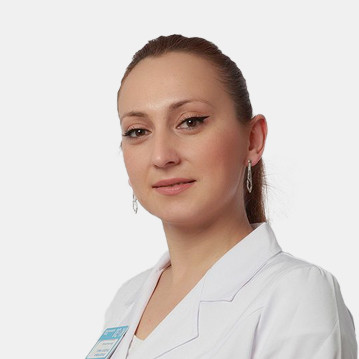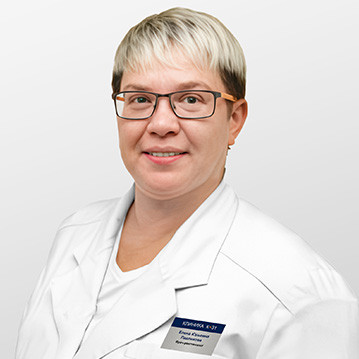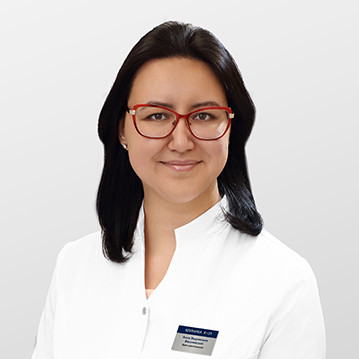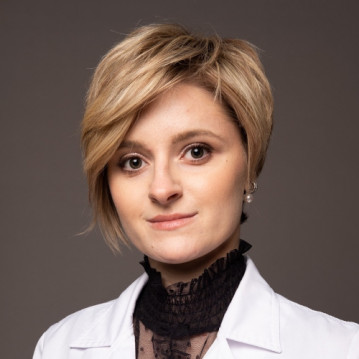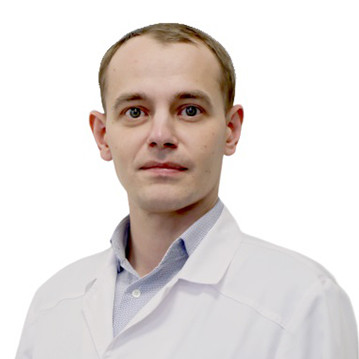Computed tomography of the pelvic organs is a method of radiation diagnostics, which is widely used in the practice of a gynecologist, urologist, oncologist, and surgeon. During the study, the patient's body is scanned by X-rays in several projections and from different points. The resulting X-ray images are processed by a computer program and converted into digital image format. Due to the high information content and detailed anatomical structures, the procedure allows you to make an accurate diagnosis and draw up an effective treatment plan.
Features of spiral tomography (SCT)
CT is considered to be an improved version of pelvic computed tomography. The X-ray machine continuously scans the object under study along a spiral trajectory, performing a series of layer-by-layer images - up to 300 images per revolution. Depending on the objectives of the study, the diagnostician can change the thickness of the slices, which makes it possible to recognize small pathological foci with a diameter of no more than 1 mm. After processing the data by the software, it is possible to obtain three-dimensional images of the target zone, create multiplanar reconstructions based on X-ray images.
Spiral CT of the pelvic organs is characterized by high quality and detail of images, and diagnostic information is more complete and reliable.
Area of study CT OMT
The technique is used in relation to patients of both sexes with suspected diseases based on the results of an external examination, complaints, ultrasound, laboratory tests.
What is included in a CT scan of the pelvis in women:
- Examination of the genital organs - uterus, ovaries, fallopian tubes, cervix, vagina.
- Assessment of the state of the urinary system - bladder, ureters, urethra.
- Examination of the lower intestine and the space behind the uterus.
CT of the pelvic organs in men gives an idea of the state of the genitourinary system, including the prostate gland, seminal vesicles, vas deferens, soft tissues. During the diagnostics, lymph nodes, bones, joints and cartilages of the pelvic part of the skeleton are also visualized.
If the doctor needs to examine the vascular system and identify the smallest neoplasms, a CT scan of the abdominal cavity and small pelvis with contrast is performed. When a contrast agent enters the blood, the images become clearly visible vessels and anatomical structures that are inaccessible to study by standard X-ray scanning.
What will the tomography show
Radiation diagnostics is prescribed for suspected diseases of the internal organs located in the pelvic area, as well as bone and cartilage structures. What an X-ray scan shows:
- Inflammatory and infectious processes.
- Pathological accumulation of fluid, blood, purulent discharge.
- Malignant and benign neoplasms.
- Metastatic tumors (metastases).
- Lymph node lesions.
- Anatomical anomalies.
- Changes in the position of internal organs as a result of injuries.
- Fractures.
- The degree of patency of the fallopian tubes.
- Vascular pathologies.
CT scan of the ovaries will show adnexitis, oophoritis, physiological and pathological cysts (including polycystic), torsion of the cyst legs. Tomography of the organs of the urinary system helps to detect tumors of the bladder, strictures of the urethra, urethral fistulas. When studying the area of the rectum, polyps, cancerous tumors, postoperative perianal fistulas are visualized.
Indications for research
CT of the small pelvis in women and men allows you to simultaneously solve several problems - to clarify the diagnosis, monitor the effectiveness of treatment, track the dynamics of the development of the disease, and identify postoperative complications. Based on the results of the examination, the attending physician can judge the appropriateness of surgical intervention, determine the stage of oncology and the prevalence of the pathological process.
Indications for CT of the pelvic area:
- Suspicions of inflammatory diseases - cystitis, urethritis, salpingitis, oophoritis, endometritis, prostatitis.
- Signs of urolithiasis and strictures of the ureters.
- Suspicion of obstruction of the fallopian tubes.
- Menstrual disorders.
- Clarification of the causes of female and male infertility.
- Injuries to internal organs, pelvic bones and spine.
- Pain when urinating.
- Signs of internal bleeding, circulatory disorders, vascular pathologies.
- Pain in the lumbar region, sacrum, lower abdomen.
- Suspicions of tumors, metastases in bones and lymph nodes.
Spiral tomography due to its high scanning speed is used as a method of emergency diagnosis for injuries and emergencies.
For a CT scan of the pelvic organs, you can get a referral from a gynecologist, proctologist, urologist, surgeon, oncologist, traumatologist, radiologist. In some cases, under the control of a tomograph, procedures for taking a biopsy, draining abscesses and removing accumulated fluids are performed.
List of contraindications
Restrictions to the procedure are associated with a certain radiation load that the CT scanner creates. X-ray examinations are contraindicated:
- Pregnant women.
- Children under 5 years old.
- Patients with mental disorders.
- Persons with hyperkinesis (inability to control movements and be immobile).
- Patients under the influence of drugs and alcohol.
If CT of the abdominal cavity and small pelvis is performed with contrast, severe kidney pathologies, iodine allergy, and thyroid disorders are excluded. The X-ray machine imposes certain restrictions - some models of tomographs are designed for patients weighing no more than 120-130 kg.
For women during lactation, X-ray examination with contrast is not prohibited, but it is necessary to refuse breastfeeding until the substance is completely removed from the body (about 2 days).

